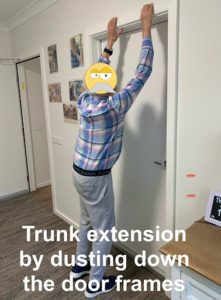Physiotherapy for those living with dementia
At Move Healthcare we see a lot of clients who are living with dementia. Whilst the management can often be complex and the improvements can occasionally be slow to see, the rewards from helping those who are living with dementia are well worth it. Not only is it rewarding to help those who are living with the condition, but is also very rewarding working with their carers and their families.
A physio’s role in helping someone living with dementia is no different than that of a physio’s role in helping anyone out there with any other problem. The strategies and treatment techniques might be different, but the underlying principles of assessment, management and clinical reasoning are the same. And whilst physiotherapy is not a modality used to treat the underlying causes of dementia, it can be very useful in minimising the effects of dementia (e.g. reduced mobility) and other underlying issues (e.g pain). Physiotherapists also do play an important role in the prevention of falls by prescribing exercise programs to maintain muscle strength and balance, and working within the multidisciplinary team to provide strategies to minimise falls risk.
One very important part of management of those living with dementia is the need for good communication among all those involved in the person’s care. Management can sometimes be quite complex due to the fact that there are often multiple impairments. As communication with those living with dementia can often be affected, it’s important to ensure there is effective interaction with the patient to promote best possible outcome and person-centred care. Quite often this might involve thinking outside of the box when it comes to exercise prescription.
A recent example we have of this was when we were asked to help rehabilitate a client following a hip fracture. The elderly client was living with dementia and was 4 months post fracture. He was still struggling with his walking, had a slight limp, was quite flexed at the trunk and required a 4-wheeled walking frame. Upon assessment it was quite apparent that his hip joint and surrounding soft tissues were still very tight and as such he had developed quite a stooped posture. His family reported that in his younger days he was a keen AFL player and cricketer and up until the hip fracture he was very mobile, did not require a walking aid and loved to walk. It quickly became apparent that prescribing some traditional exercise might be challenging and not the most effective way to improve his physical capacity. So we set some fun and functional activities for him to do each day with his carers. This included playing cricket shots (even if we did not have a bat), hanging out the washing and also doing a bit of dusting around the home. These might not be your traditional physiotherapy exercises, but they were activities that he enjoyed performing and promoted his own functional capabilities. Most importantly they seemed to work as after several weeks we were able to put the 4-wheeled walking frame in the garage and he was walking around limp and walking aid free!!


